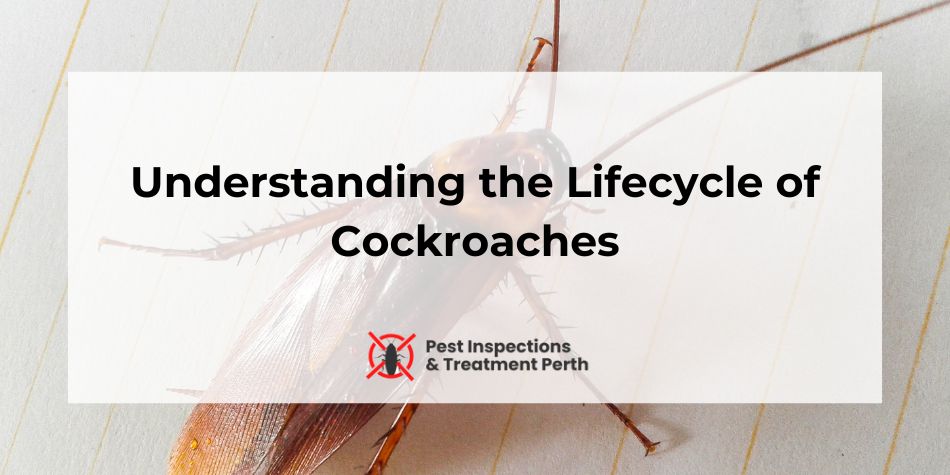Understanding the Lifecycle of Cockroaches
& How to Intervene
The lifecycle of cockroaches is a fascinating and complex process that involves three distinct stages: egg, nymph, and adult. Understanding this process is essential for effective pest control and prevention, especially if you’re allergic to their droppings.
Stage 1 – Egg Stage
The first stage of a cockroach’s life cycle is the egg stage. Cockroaches lay their eggs in warm, secluded areas of homes and businesses, such as pantries, storerooms, and gaps between walls and furniture. The eggs are contained in cases that can hold 10-40 eggs at a time. The length of the egg stage can vary from 15-100 days, depending on the climate. Warmer temperatures promote faster development and hatching times.
Cockroach eggs can be challenging to detect and eliminate since they are usually laid in secluded places. Here are some methods to kill cockroach eggs:
- Use insecticide: Insecticides that contain hydramethylnon, boric acid, or fipronil are effective in killing cockroach eggs. Spray these insecticides in the areas where you suspect the eggs might be, such as cracks and crevices, baseboards, and behind appliances. Be sure to follow the manufacturer’s instructions when using insecticides.
- Vacuum regularly: Vacuuming regularly can help get rid of cockroach eggs, especially if they are in accessible places. Make sure to use a vacuum cleaner with a HEPA filter to prevent the eggs from escaping and spreading.
- Use heat: Cockroach eggs cannot survive high temperatures. You can use a hairdryer, heat gun, or even an oven to expose the eggs to high heat and kill them. However, be careful when using heat, as it can be a fire hazard.
- Use diatomaceous earth: Diatomaceous earth is a natural substance that can kill cockroach eggs. It works by drying out the eggs and piercing their shells. Sprinkle the powder in the areas where you suspect the eggs might be and leave it for a few days before vacuuming it up.
It’s important to note that killing cockroach eggs alone may not solve your cockroach problem. You also need to eliminate the adult roaches and their food and water sources to prevent a new generation of eggs from hatching.
Stage 2 – Nymph
Once the eggs hatch, the nymph stage begins. Nymphs are small, wingless versions of adult cockroaches. They undergo several molts as they grow, shedding their skin each time. After each molt, their bodies change color from white to brown or gray. Nymphs take 1-3 months to reach adulthood and undergo a final molt to reach their full adult size.
Cockroach nymphs are the immature form of cockroaches that can be found crawling around your home or business. Here are some effective methods to kill cockroach nymphs:
- Insecticide sprays: Using an insecticide spray is one of the most common ways to kill cockroach nymphs. Choose an insecticide spray that is labeled for use against cockroaches and follow the instructions carefully. Spray it directly on the nymphs or in the areas where you suspect their presence.
- Gel baits: Gel baits are another effective way to kill cockroach nymphs. These baits contain a slow-acting poison that cockroaches will consume and then bring back to their nest, effectively eliminating the entire colony. Apply the gel bait in areas where you see cockroach activity.
- Boric acid: Boric acid is a natural substance that is highly effective against cockroach nymphs. Sprinkle boric acid powder in areas where you see cockroach activity. When cockroaches come into contact with the powder, it sticks to their bodies and is ingested, causing dehydration and death.
- Diatomaceous earth: Diatomaceous earth is a natural powder made from fossilized algae. It works by drying out the exoskeleton of the cockroach, ultimately leading to death. Sprinkle diatomaceous earth in areas where you see cockroach nymphs or in areas where they may be entering your home.
- Vacuuming: Vacuuming up cockroach nymphs can be an effective way to eliminate them. Use a vacuum with a disposable bag or empty the contents into a plastic bag and dispose of it in an outdoor trash can.
It’s important to note that killing cockroach nymphs alone is not enough to eliminate a cockroach infestation. You also need to target the adults and their nests to completely eradicate the problem.
Stage 3 – Adult Cockroach Stage
The final stage of a cockroach’s life cycle is the adult stage. Adult cockroaches have a distinct appearance, with a brown color and three pairs of legs, with two pairs of wings. They are 1-½ to 3 inches long and can survive for several months or even years, depending on the species.
There are several effective methods to kill adult cockroaches:
- Bait stations: Bait stations are one of the most effective ways to kill adult cockroaches. These stations contain a slow-acting poison that the cockroaches eat and carry back to their nest, where it spreads to the other cockroaches, eventually killing them all.
- Insecticide sprays: Insecticide sprays are a quick and easy way to kill adult cockroaches. These sprays contain chemicals that are toxic to the pests and can kill them on contact.
- Boric acid: Boric acid is a natural substance that is highly toxic to cockroaches. It is often used as a powder that can be sprinkled in areas where cockroaches are likely to hide, such as cracks and crevices.
- Diatomaceous earth: Diatomaceous earth is a fine powder made from the fossilized remains of diatoms. When cockroaches come into contact with diatomaceous earth, the powder sticks to their bodies and absorbs the waxy outer layer, causing the pests to dehydrate and die.
- Sticky traps: Sticky traps are an effective way to trap and kill adult cockroaches. These traps contain a sticky substance that the cockroaches get stuck in and are unable to escape.
It’s important to note that a combination of these methods may be necessary to effectively control a cockroach infestation. Additionally, proper sanitation and exclusion techniques should also be implemented to prevent future infestations.
About the Lifecycle of Cockroaches
Overall, the lifecycle of cockroaches can take several months to a year, depending on environmental factors. To prevent and control cockroach infestations, it is crucial to identify and eliminate eggs, nymphs, and adults through effective pest control methods. Regular cleaning, sealing cracks and crevices, and using baits and insecticides can help keep these pests at bay.

